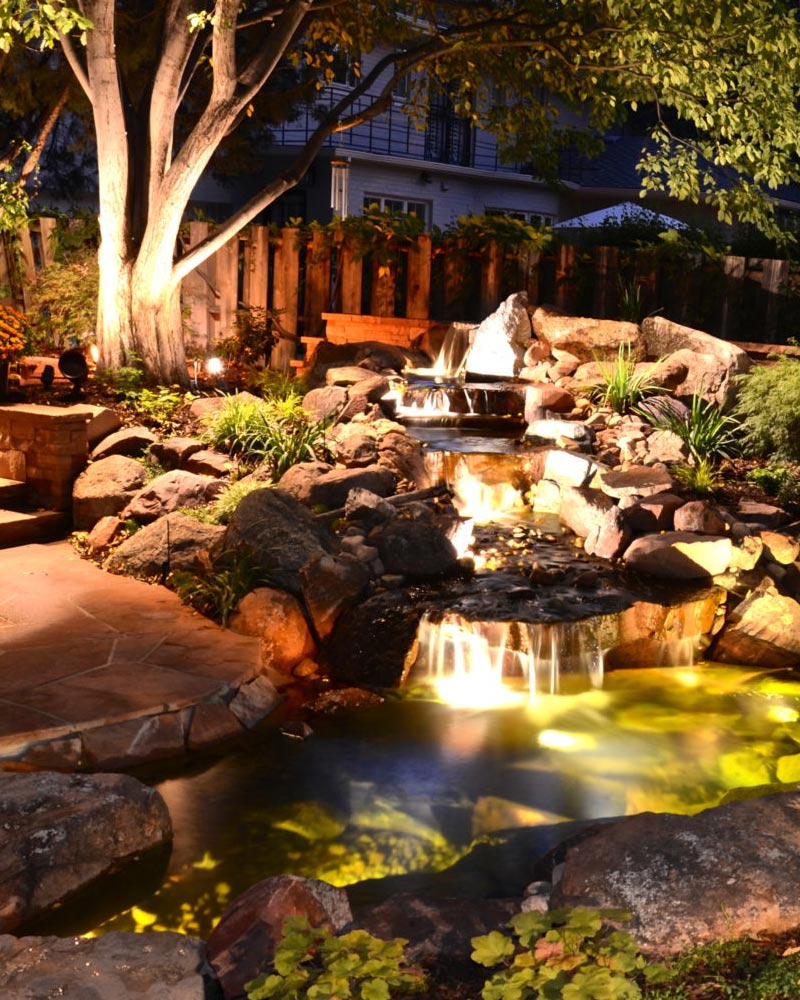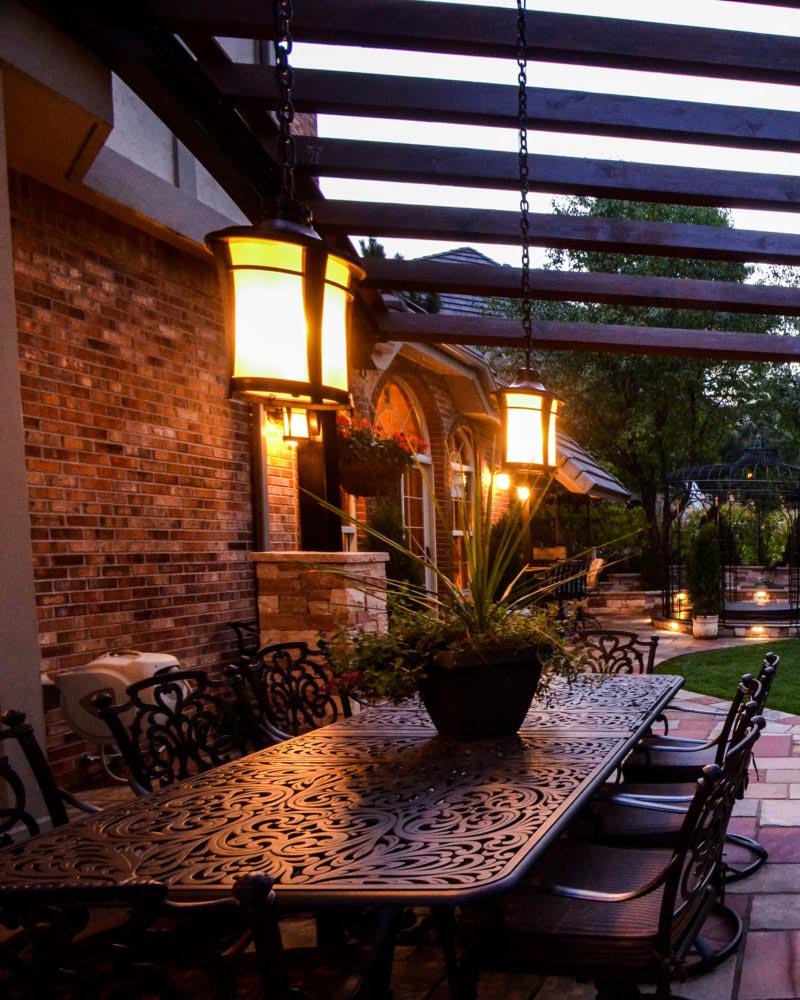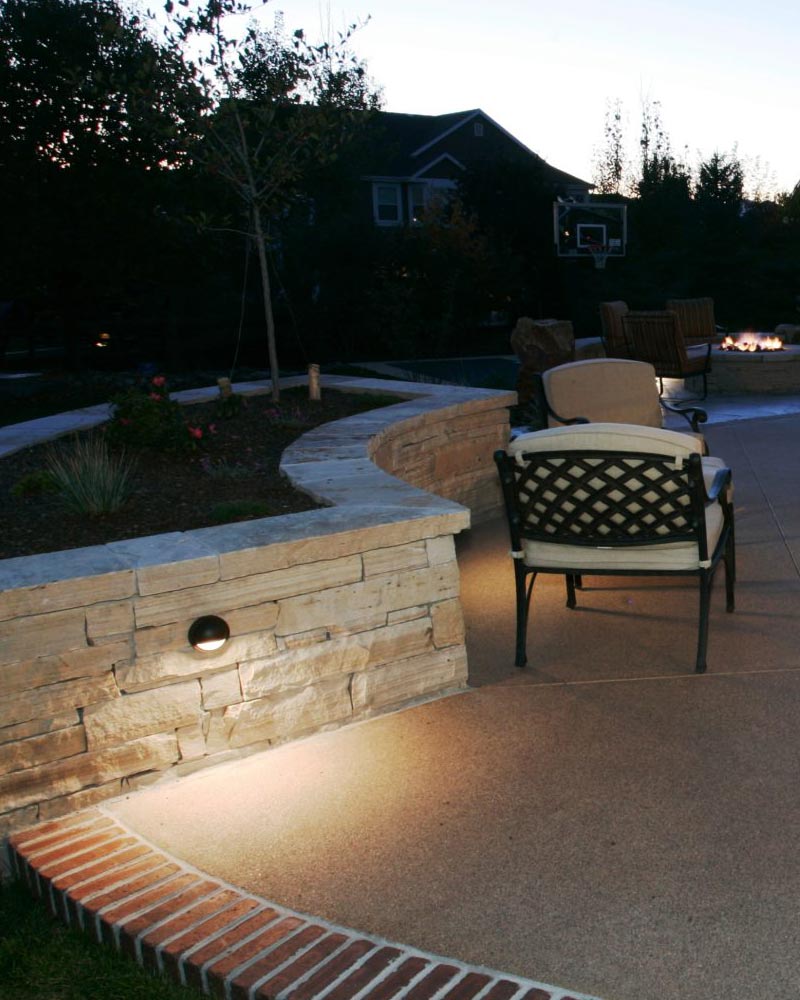 Imagine bringing the atmosphere of a five star resort to your own home where you can step out onto the patio and into a perfectly illuminated yard. We see landscape lighting as an artistic challenge and help you find the best way to light up your yard so that your trees, architecture, and water features emanate a welcoming glow for your friends and family to enjoy, while also providing the utility you need for late night grilling, drinks, and entertaining.
Imagine bringing the atmosphere of a five star resort to your own home where you can step out onto the patio and into a perfectly illuminated yard. We see landscape lighting as an artistic challenge and help you find the best way to light up your yard so that your trees, architecture, and water features emanate a welcoming glow for your friends and family to enjoy, while also providing the utility you need for late night grilling, drinks, and entertaining.
No matter what your goal is, there are a few variables to consider like where your lights should physically be placed, how bright they should be, and what color they should be. We can help you answer these questions and more to create the perfect lighting solution for your unique landscape.
HIGHLIGHTING LANDSCAPE FEATURES
Depending on the types of features you want to highlight, your lighting solutions could be vastly different. Water features illuminated from above will benefit from neutral white light positioned several feet above the surface of the water. As your light reflects off the surface of the water, it’ll help capture some of its movement which is otherwise lost in the dark. It’s important to place white lights high above the water because putting them too close to the surface will make the reflections blindingly bright and unnatural looking.
 Illuminating a water source from below, on the other hand, will do better with a warmer, more yellow-colored light which gives it a more natural appearance as if the sun were setting, while also muting the appearance of movement and giving it a calming feeling. Picking neutral or cool blue lights can be confusing to the eye, and would generally be a better idea for lighting swimming pools or other deep water features.
Illuminating a water source from below, on the other hand, will do better with a warmer, more yellow-colored light which gives it a more natural appearance as if the sun were setting, while also muting the appearance of movement and giving it a calming feeling. Picking neutral or cool blue lights can be confusing to the eye, and would generally be a better idea for lighting swimming pools or other deep water features.
Stone features also benefit from similar low-placed, warm-colored lights. Yellow lights help stones mimic the appearance of the sun casting its final rays as it sets for the night, and keeping them low to the ground and out of plain sight not only helps create this illusion, but it also creates bold, dramatic shadows, creating stunning color contrasts.
CREATE USEABLE OUTDOOR SPACE
 Areas like patios and porches are prime space to eat dinner, enjoy drinks, or entertain guests, and the right lighting will really help put the finishing touches on them. As in many other situations, you’ll probably want to stick with warm yellow, possibly even verging on orange (but not pumpkin orange!) lights. They help to add a glow to the area, making it feel welcoming and inviting whereas neutral or cool colors feel artificial and harsh, especially against the night sky. Picture the difference between walking into your favorite restaurant and a supermarket, you wouldn’t want those blindingly-bright fluorescents on your patio!
Areas like patios and porches are prime space to eat dinner, enjoy drinks, or entertain guests, and the right lighting will really help put the finishing touches on them. As in many other situations, you’ll probably want to stick with warm yellow, possibly even verging on orange (but not pumpkin orange!) lights. They help to add a glow to the area, making it feel welcoming and inviting whereas neutral or cool colors feel artificial and harsh, especially against the night sky. Picture the difference between walking into your favorite restaurant and a supermarket, you wouldn’t want those blindingly-bright fluorescents on your patio!
Unlike most other situations where warm lights are generally placed low, in this case, you’ll want to keep them up high. A pergola provides the perfect anchors for hanging lights and lanterns or string lights. If that’s not an option, you can also mount your lights on a nearby wall or overhanging roof, or use freestanding lamps on a table or flat surface.


